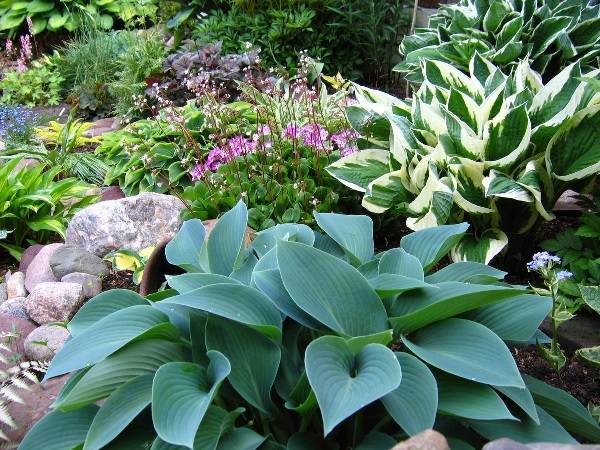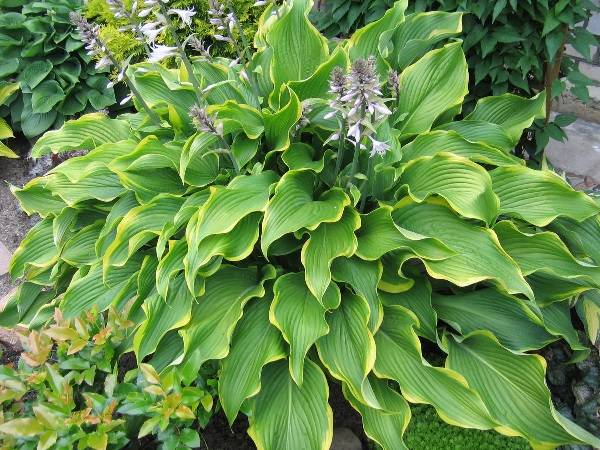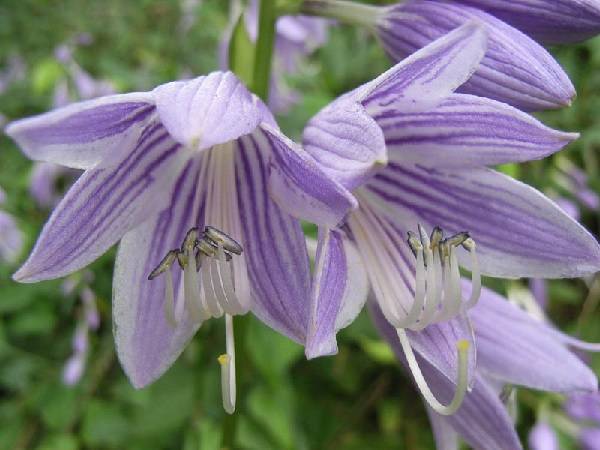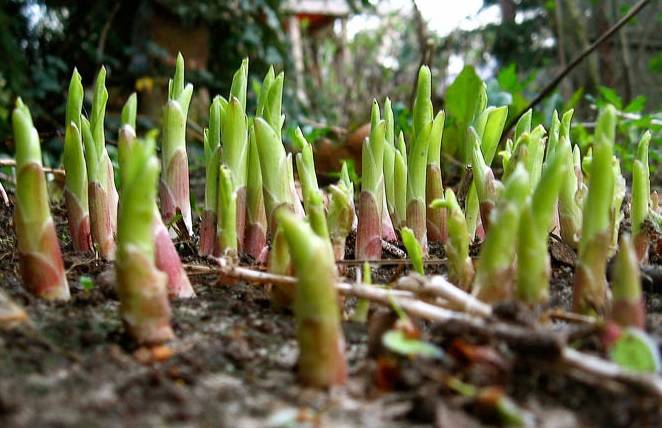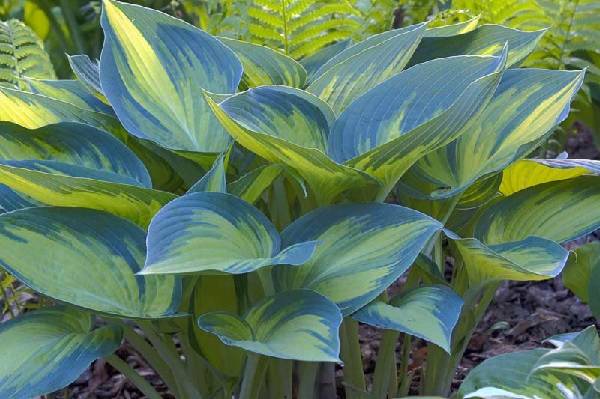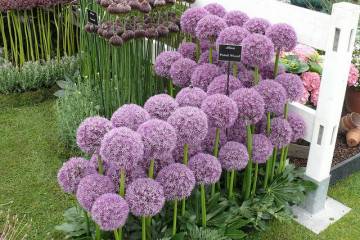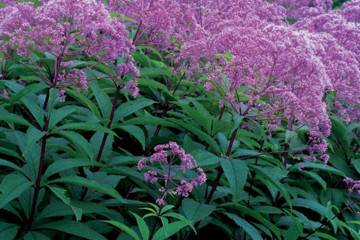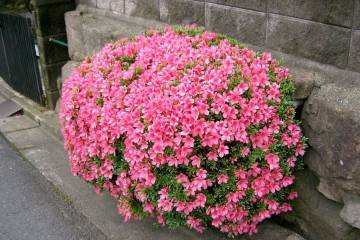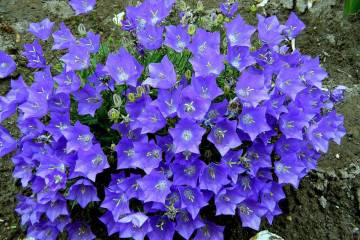Hosta - boarding and leaving
Content:
Hosta is a perennial southern plant that adapts well to various conditions and at the same time pleases the eye not with flowers, but with beautiful leaves. An unpretentious host, planting and caring for which will not create any particular difficulties - a welcome guest in Russian gardens, as she tolerates rather harsh winters well.
Description of the plant
This plant has many names - hosta, funkii, sometimes there is even such a variant as the giant plantain. And different varieties can look different: their leaves can be green, blue, variegated. Regardless of the variety, all functions are distinguished by their endurance and winter hardiness. It is believed that they can perfectly withstand severe frosts, but only in a dormant state.
Considering how hardy the host is, planting and leaving it in the open field will not cause difficulties in Central Russia, even in the Moscow region, which is characterized by frequent spring frosts. But, for example, the Urals is not the most successful region for dacha cultivation of funky. However, as well as subtropical conditions, since many varieties do not adapt well to them.
Hosta: planting and care in the open field
It is perfectly possible for a host to grow at home in large containers or pots. But, of course, they grow much more beautifully in large areas. So, if the florist has a summer cottage, you can plant funkii there too.
What is needed for planting in the country
Like almost all flowers, the hosta prefers a nutritious and well-drained and breathable soil. She needs light soil, acidic or alkaline, in any of these cases, the plant will feel great.
To grow a hosta, you need to buy quality seedlings, preferably in a garden center, to be sure of the varietal characteristics. The best time to shop is spring. In principle, seedlings appear already in February-March, but during these months it is too early to transplant the plant into open ground, and all this time the seedlings will need to be stored somewhere so that they do not suffer. In such cases, they practice temporary planting in a 1-2 liter pot, which is filled with soil that is neutral in terms of acidity.
You can use the ready-made mixture in which all other house flowers are grown. But it is better to make the mixture yourself, for this they take leafy earth, peat, sand and vermiculite. It is also important to choose the right pot.
Be sure to check the seedlings when buying. They are usually sold in bags containing soil or nutrient mix. If you roll it to the side, you can see the rhizomes. They should be long enough, resilient and free of visible damage or signs of disease. In addition, you need to pay attention to the shade of the rhizomes, which should be light. It is important that the roots are not overdried, but excessive moisture harms them. Therefore, you should not buy seedlings if condensation collects on the packaging.
Choosing the best place
Hosta is a flower that will feel best anywhere in an area protected from direct sunlight and wind. For example, this plant can be planted on the north side of a house or fence, as well as under the canopy of tall trees. The best option is partial shade, that is, an area that is illuminated by the sun only in the first half of the day, no longer than four hours.
Blue host varieties will do great if they only get two hours of sunshine a day. But variegated varieties in the shade do not feel very good. In such cases, they lose their decorative effect, turn pale. But even in the sun itself, you should not plant them. The best option is if the shadow falls on them at noon and somewhere else until 3-4 pm. If white spots appear on the leaves, or they turn yellow and lose their elasticity, this all suggests that they are receiving an excessive amount of direct sunlight.
Step-by-step planting process
It is best to plant this plant outdoors in early June, when there is no longer any threat of frost. It is clear that most gardeners have the question of how to plant a host in the country so that it grows beautifully. The algorithm of actions will be as follows:
- It is necessary to dig the planting hole, making it wide enough, taking into account the fact that the root system of the funky tends to grow in a horizontal direction. Hosts can grow in one place for many years without transplanting, so the hole must be made deep enough, at least 30 cm.
- Compost is placed at the bottom of the planting pit, a mixture of peat or sand is added. If the gardener knows that the soil on the site is too acidic, then a handful of wood ash is thrown at the bottom of the hole.
- The pit is filled with soil about 2/3 of its height, and the ground is poured with water.
- The root system of the funkii seedling is carefully distributed over the surface of the moistened soil so that the growth buds are at the ground level, and sprinkle them with earth, and then watered again with water.
Caring for hosts in the garden
As a rule, caring for a host in the garden does not cause any difficulties. But, of course, you need to know in advance about all its nuances so that the plant feels comfortable enough.
Reproduction of hosts usually occurs by division, much less often by seeds. Dividing the bush is best done in the spring. This is the fastest way, much less labor intensive compared to seeds. If at this time it was not already possible, then it will need to be done in late autumn. In general, it is difficult to determine the optimal time for such work. Hosts are garden centenarians. Theoretically, they can grow for a long time in the same area. However, even with such endurance, their bushes need rejuvenation every 6-10 years, but much depends on the specific variety. You can determine that it is time to carry out such an operation by the fact that the leaves of the plant begin to shrink. Then they divide the bush and look for a new place for the seedling, replanting it according to the algorithm described above.
Watering mode
Hosta is a plant that loves moisture. The first watering is carried out during planting. But at the same time, the plant does not like flooding. The best option is drip irrigation, but this is not always possible, and in such cases you just need to be careful.
You need to be especially careful with blue varieties. Water washes away the wax coating from their leaves, and they become practically defenseless in front of the bright sun. In addition, moisture entering the leaves significantly increases the risk of developing fungal diseases.
Top dressing
Those who are interested in such a topic as hosta, its flower, care and cultivation should know that proper feeding is very important for this plant. Fertilizers are necessary for indoor plants, and even more so for a summer cottage flower, since they directly affect the elasticity of the leaves and their shade.
The host is fed several times a season. Experienced growers advise taking long-term fertilizers for this. The composition of such funds must certainly include potassium, phosphorus and nitrogen. The latter should be a little, since it brightens the leaves and kind of blurs the colors. Therefore, if there is a hosta on the site, proper care involves the introduction of nitrogen only in early spring, when the leaves have not yet appeared.
In order for the plant to grow quickly, and many leaves appear on it, it is worth using azofoska or fertilizer in which the proportions would be as follows: two parts of nitrogen to one part of phosphorus and one part of potassium. It is clear that the amount of fertilizer depends on which plant the mixture is applied to. If it is a large bush, then there may be a lot of it, and if it is a miniature function, one spoon is quite enough.
The second top dressing in a year is applied towards the end of spring or even at the beginning of summer. In this case, all three listed elements are mixed in the same proportion. Then the plant will have beautifully colored leaves. From ready-made mixtures of this type, osmotk can be used.
Features of care during the flowering period
Typically, most plant varieties will bloom from June to September. Their flowers can be quite nondescript, especially compared to the beautiful leaves. Indeed, you do not need to love the host for the flowers, but you should definitely surround her with care. At this time, at least one top dressing is certainly carried out so that the plant does not lose its green mass. As for watering, it must be quite active, but in compliance with all the above rules.
Features of care during the rest period
Many questions arise with how to take care of the host during the rest period. Taking into account the fact that it occurs for a plant in winter, in principle no action is necessary. All that the hosta needs is soil mulching, which is done in the fall. Some growers also advise covering the plant for the winter in order to open it in the spring, but this only applies to regions that are characterized by severe frosts.
Preparing for winter
There is no need to carry out special preparatory measures for this plant. In the climate of Central Russia, funkii winter well in the garden in the open field, they do not need to be covered with anything. It is only important to make sure that the rhizome is at least 5 cm below the soil level. This is especially important in the first year after planting. The fact is that a plant planted too high does not tolerate temperature changes.
It is also recommended to prune the plant in the fall. This is necessary so that his bushes look lush and beautiful enough for the next year. It is best to do this when all the leaves have already turned yellow. This means that they no longer receive nutrients that are redirected to the root system. Pruning is best done with a garden pruner. At the same time, all leaves are cut off, leaving shoots up to 10 cm long.
In order for the plant to overwinter well, it is mulched. Most often, a mixture of cut grass and peat is used for these purposes.Shredded bark and compost can be considered as an alternative. The mulch layer should be 10-20 mm thick. Moreover, if the gardener decided to prune not in the spring, but in the fall, and the leaves from the plant fell on their own, they can also be a good winter shelter. But it is impossible to pour a layer of mulch on top of them, this will create a fertile soil for the reproduction of diseases and pests. It is not customary to use agrofibre and other non-woven materials for the shelter of the host.
It is not enough to know where and how to plant the host, you also need to provide it with proper watering and timely feeding. Only under such conditions will its leaves delight the eye with bright colors, and the bushes will grow, creating beautiful compositions with other garden flowers.
